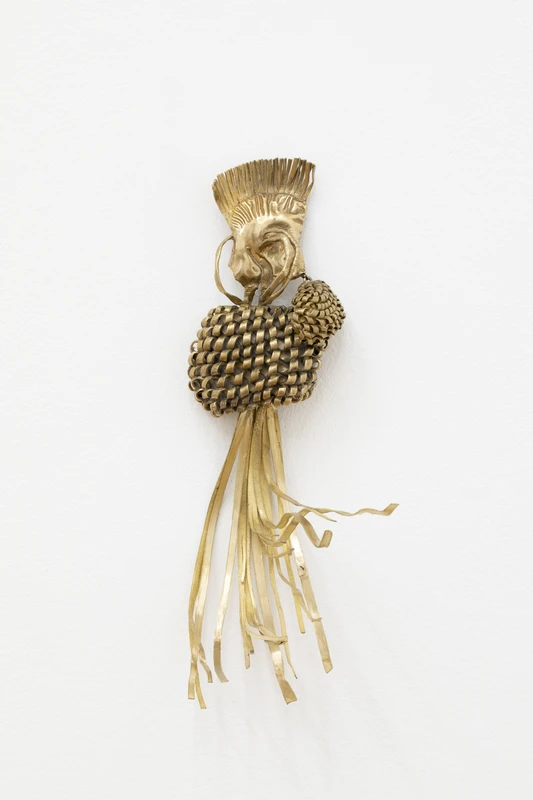Joanne Burke: Oes with works like Esses
18 Jan-1 Mar 2025


“And because her depths are high, and deeper than the day has imagined, anyone who finds in her the efflorescent source of his dreams rises very high, drawn higher than his highest day. And when, in her abundance, she is not giving waters-those supple living envelopes for specular alchemy—she gives forth airs. And, according to the weather, she can become ice or restless waves. She is hard or melting at the whim of sun or wind.And from her is born the very crystal that dream fixed in its transparent brilliance. Enigmatic fish, sleeping in her abysses and that even the wiliest fisherman will have trouble catching. Life beneath the sea is not fed upon honey even. Its own elements suffices it.”
—Luce Irigaray, Marine Lover, 1980
In Marine Lover, French writer and radical feminist Luce Irigaray undertakes to probe the German philosopher Friedrich Nietzsche’s interrogation of the feminine from the point of view of water. Irigaray utilises the metaphor of water as an uncontrollable, uncontainable and constantly transforming element, to illustrate the efforts made to dominate and conquer the feminine. Arriving at this text via research into hydrofeminism, a posthuman feminist phenomenology that understands the body as essentially linked to the natural world, London-based, British artist Joanne Burke similarly sees water as an infinite element, a mercurial, nonphysical essence that resists representation or definition.
Burke’s process begins with what was initially an accidental adoption of a forbidden 17th century divination practice known as “Hydromancy”, involving the dispersal of molten wax into bodies of cold water, allowing unpredictable shapes and textures to form and be formed by their liquid surroundings. These initial water casts invariably become the starting point for Burke’s metallic sculptures, which in Oes with works like Esses, twinkle behind the glass of a monolithic, museological vitrine. This new group of works appropriate and combine historical craft techniques including model-making, carpentry, costuming, weaving and basketry. Moulding her intricate and precarious wax forms using these techniques prior to casting, Burke excavates and utilises processes and approaches from the past for their simplicity and primitive logic.
Burke’s material transformations—from wax to water, to fire and finally to metal—recall the transmutations of matter associated with alchemical processes, a medieval chemistry often associated with sorcery and magical practices. For the artist, sculpture itself is a kind of alchemy, a divination of sorts, wherein material curiosity leads to a process of divining an object or form into being. Collaging elements together intuitively into surreal compositions, Burke decidedly interrupts any familiar—organic or inorganic—features to instead prioritise frustration, unexpectedness and the awkward. This choice: to resist, undo and abstract recognisability within her forms, renders them intangible and untameable, much like the water they were first imagined within. Existing in this uncanny space between unfamiliarity and the literal representation of an object, the sculptures in Oes with works like Esses similarly locate between past and future, becoming relics at once placeless and timeless.
Joanne Burke (b. 1982, United Kingdom) lives and works in London. Past exhibitions include A Six Boed Poynt in a Wave at ADZ Gallery, Lisbon (2023); Curtains at Bibeau Kreuger, New York (2023); BLISS POOL at Space K Seoul (2023); Donna Huanca performance in Seoul (2023); BIJOUX at Fitzpatrick Gallery, Los Angeles (2022); The Essential Goods Show at Fisher Parrish, New York (2020); A Ten Boed Poynt In A Wave at Operativa Arte Rome, Rome (2019); and Several Walls at Swiss Institute Rome, Rome (2019).